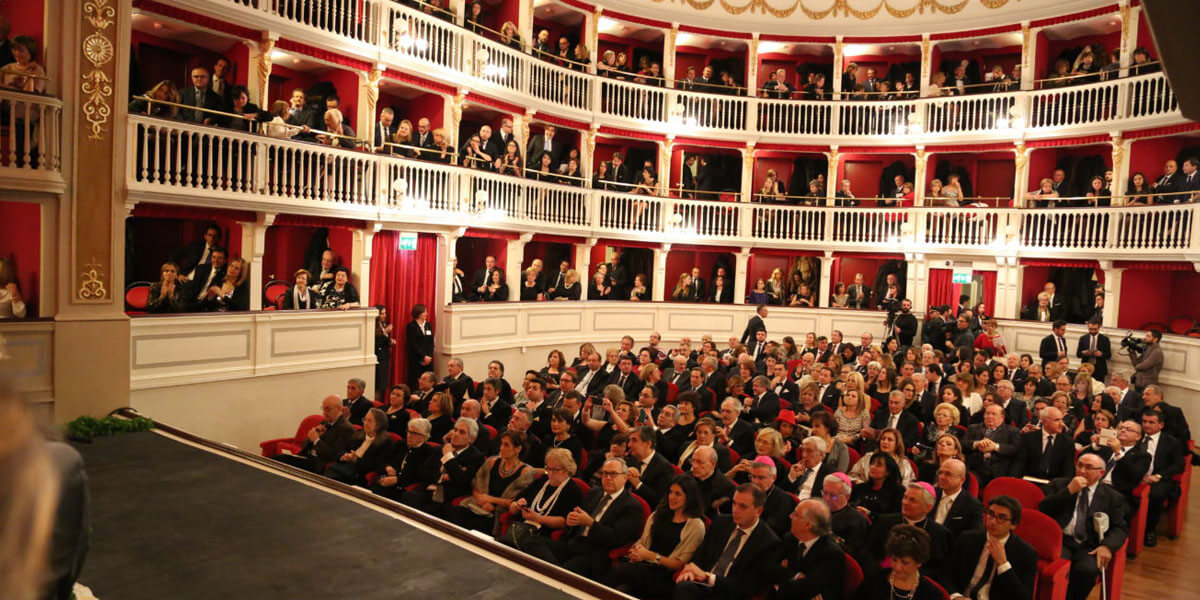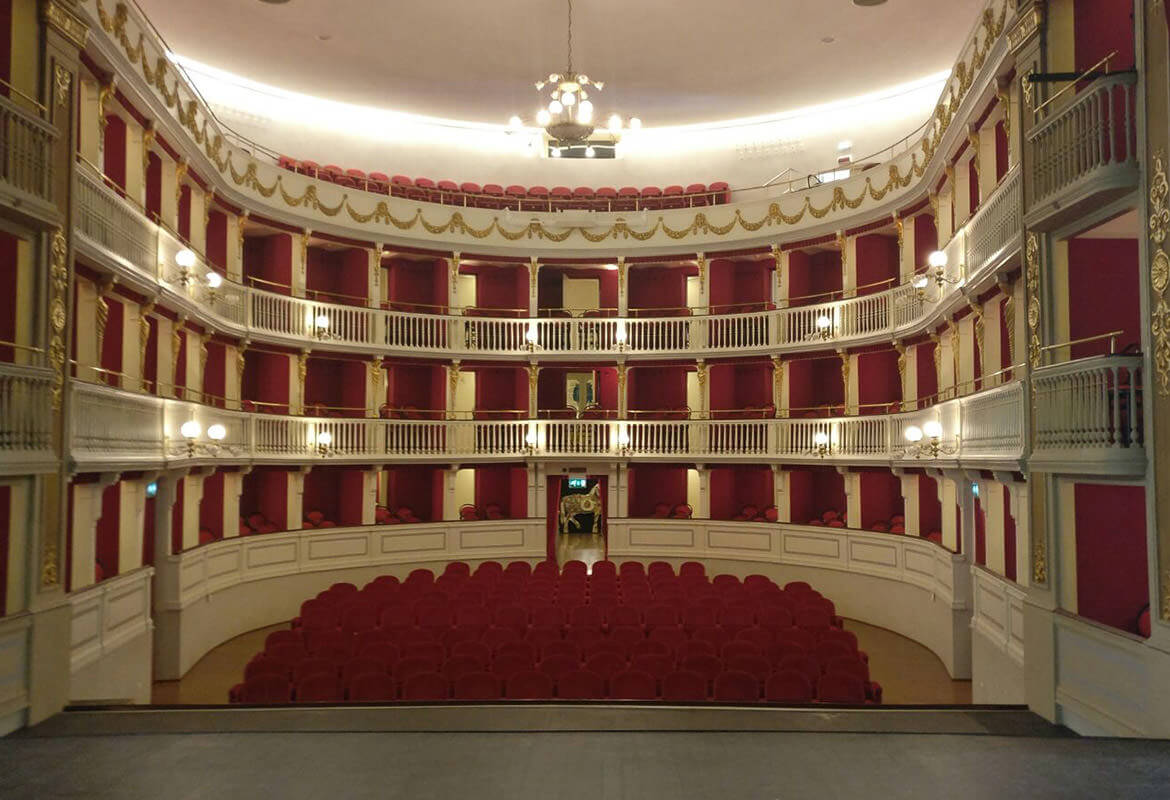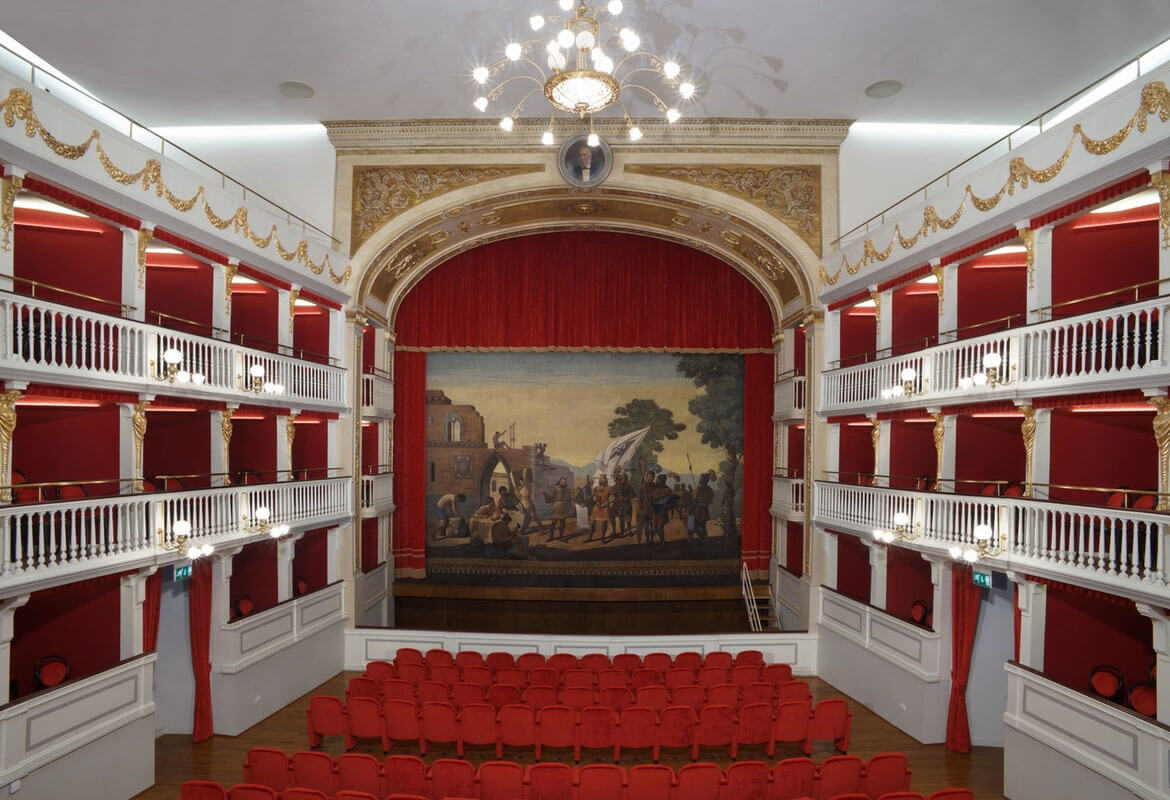In the aftermath of the death of musician Saverio Mercadante, which took place in Naples on 17 December 1870, the city of Altamura decided to build a new theater to honor the memory of its illustrious fellow citizen. This idea will be implemented not before 1895, when, on the occasion of the centenary of the birth of the musician, a group of representatives of Altamura gathered in the committee deliberating for the construction of the new theater.
By drafting a statute, they started a public subscription that involved all social classes. Each subscriber, paying no less than 5 lire, could in turn have the ownership rights of a stage, an armchair or a chair, in proportion to the amount paid. The project obtained the support of the Municipality of Altamura which, free of charge, granted a land of 1850 meters worth 800 lire, thus acquiring the right of ownership on the central stage in the second order.
Following the report of the same designer, the engineer Vincenzo Striccoli, it was decided the area on which the new theater would be built: Largo Panettieri, an area outside the ancient city walls, near the municipal villa and overlooking Piazza Zanardelli. Thus, on March 25, 1895, the first stone of the Saverio Mercadante consortium theater was placed in a solemn public ceremony and on September 17, after only six months of work, the theater was inaugurated with the masterpiece “La Vestale”, enjoying great success.
In the aftermath of the event, the press of the time praised the organizing committee, the painter Pasquale Rossi who painted the tondo with the effigy of the master and expanded the ancient curtain executed by Montagano, as well as the designer Vincenzo Striccoli who had carried out the work without any remuneration. These conceived the theater in neoclassical style, whose facade however was never completed according to the original project – far more ambitious – due to economic constraints, so it did not go beyond a modest construction with a vestibule cadenced by pilasters destined to hold up the eardrum.
The interior, in the shape of a horseshoe, consists of four tiers of boxes and stalls, so as to contain around 500 seats. Mirabile is the historical curtain, work of the painter Montagano, representing Federico II of Svevia in the act of being updated on the state of the work of the cathedral.
The theater has hosted, for about a century, not only the opera for which it was born, but also the prose, operetta, variety, cabaret, but also the wedding or goliardic celebrations of the city and above all the public ceremonies solemn. Then with the advent of cinema, theatrical performances became increasingly rare, becoming a cinema and adapting to the new needs of post-war youth.
Its doors finally closed in 1990 due to its inadequacy to the new safety regulations. Since then the building was left to itself, as the Consortium did not have the means necessary for its restoration. The public opinion since 1995, on the occasion of the first centenary of the construction of the theater, asked in a loud voice that this good was acquired by the local authority, but without obtaining any result.
But it is only in 2003 that the events of the Mercadante Theater underwent a decisive turn. The Consortium owner of the property stipulates an agreement with the Teatro Mercadante srl company, consisting of a consortium of Altamura entrepreneurs, who, driven by a fervent spirit of patronage, have at their own expense – the only case in Italy – pursued the recovery of the building and the its cultural function, finally returning it to the city.



